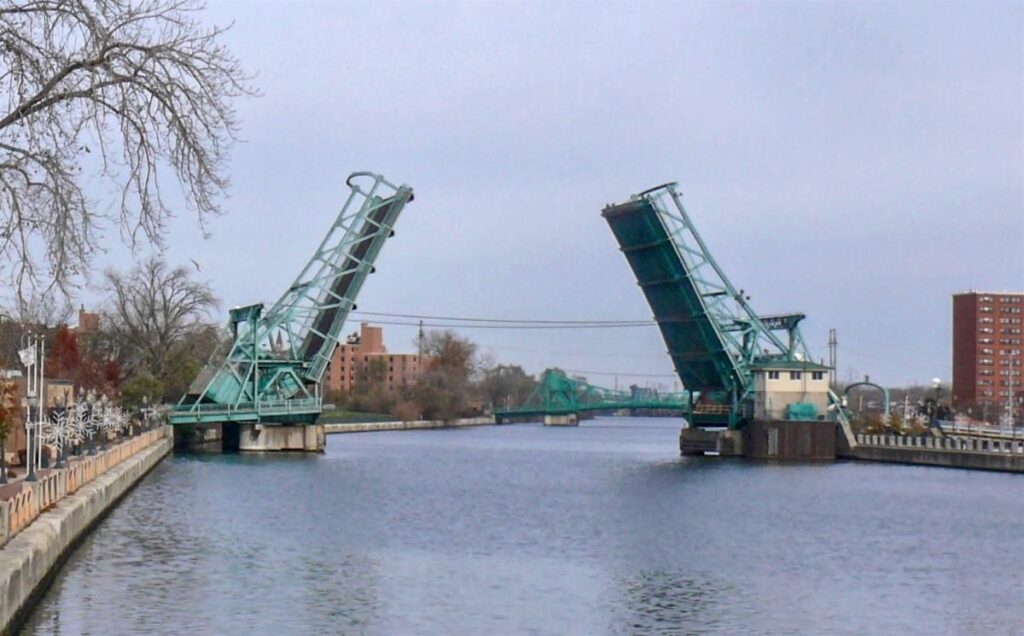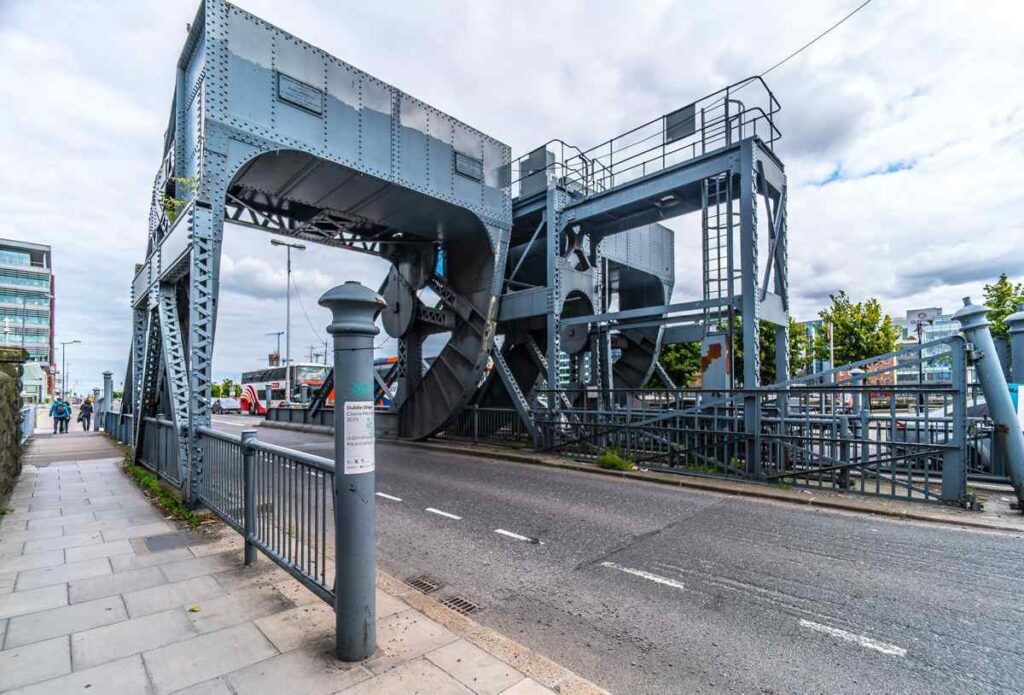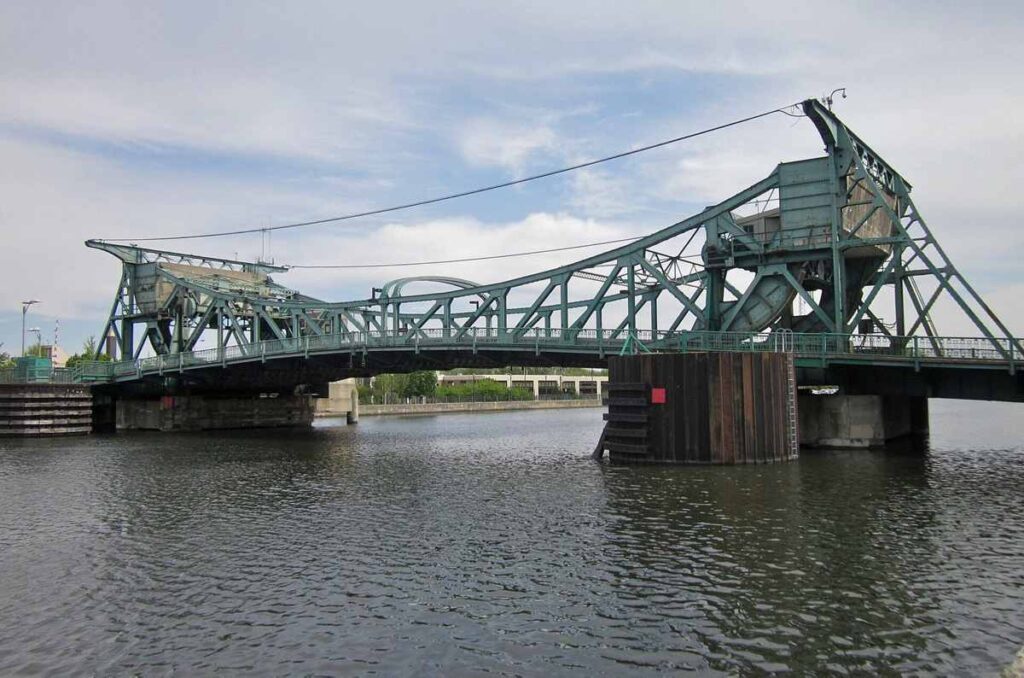Rollin’ on the river.
William Donald Scherzer (January 27, 1858 – July 20, 1893) was an American engineer and inventor who invented the rolling lift bridge. In 1893, he suffered with typhoid fever which brought an attack of brain fever. Scherzer died at the age of thirty-five in Chicago.

Photo: David Wilson
Scherzer received his primary education in public schools, where he exhibited talent in art and mathematics. He took up civil engineering at the Polytechnicum college in Zurich, Switzerland when he was eighteen years old. He graduated in 1880. Scherzer returned to America and in 1883 he was employed by the Pittsburg, Fort Wayne & Chicago Railway Company.

Photo: formulanone
He took up the specialty field of bridge engineering. In 1885 he was employed as the assistant to the chief engineer of the Keystone Bridge Company of Chicago. He was there for eight years. Scherzer entered into business for himself in 1893 in Chicago as a consulting and contracting engineer.

Photo: flickr
Scherzer was the inventor of a refinement of the bascule bridge called the Scherzer rolling lift bridge. His last engineering work before he died, was the design of two of these rolling lift bridges in Chicago. His design pivots the bridge like a rocking horse. The friction is lowered because it is rolling friction.

Photo: William Murphy
Moreover when the bridge is open the channel is completely free as the mechanism has rolled away the bridge from the edge leaving the passage free for wide traffic. The timing of Scherzer’s unique design could not have been better. Railroads were being built with bridges needed to cross rivers in dense urban sites. His patented method made it possible for a bridge to accommodate a change of grade.

Photo: Doug Kerr
About the Author:

Bruno Dursin – Managing Director at Believe in Steel. Bruno has more than 30 years of experience in promoting steel & steel solutions. His clients benefit from his extensive network within the building industry.



